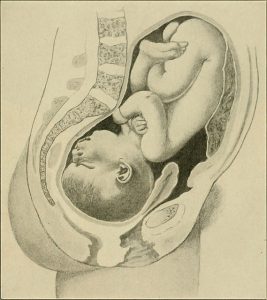The most dreamed-of moment for a woman who wants a child is childbirth! Aside from becoming pregnant, one of the best feelings this phase brings is that your child is about to be in your arms. Cervix effacement is one of the main signs that labor is approaching! This condition is usually identified through a clinical exam performed by your doctor at the office, but it can also be detected through an ultrasound exam.

Thinned Cervix
A thinned cervix means that the distance between the cervix and the uterus itself is decreasing1. We can say that in terms of percentages, the more thinned and flattened it is, the closer you are to labor. In the maternity ward or doctor’s office, you might hear 10%, 20%, 30% effaced or thinned.
This percentage is crucial because it can indicate if there is any risk when the pregnancy is still in its early stages or if there are risks of preterm labor. If there is a risk, the doctor will prescribe medication and instruct the patient to rest to prevent further thinning and also stop the onset of labor. The incorporation of the cervix into the uterus can take just a few hours or even days.
In fact, speaking of labor, cervical effacement is part of the latent phase of labor. It is not yet active labor but is progressing toward the final stage, the expulsion. The cervix begins to thin when the baby starts descending the cervical canal. The baby’s head puts pressure to dilate the uterus for the baby to pass through. We can consider cervical effacement as the first stages of dilation before delivery.
Symptoms of Cervical Effacement
The symptoms of this event might not be very noticeable. Except for the pressure that women might suddenly feel, sometimes accompanied by vaginal twinges. A few women may feel pain when walking, sitting, or lying down. They feel similar to pulling sensations in the vagina.
Mucus Plug Discharge
Discharge of the mucus plug2 is also one of the signs that dilation may be occurring, so both mother and doctor must be alert to any sign the body may give.
When there are still no painful contractions or obvious signs like water breaking, and even so there is evidence of effacement, the doctor may help intensify labor using medications based on oxytocin. This makes everything more active and also faster.
Explanatory Video
Are there any exercises or tricks you can use at home to help with dilation? Yes! There are several ways to assist with dilation and especially with cervical effacement.
Squatting exercises, warm baths, and walking help a lot in effacing the cervix and promoting dilation3. Exercises such as Pilates, for example, also help a lot to facilitate dilation. Artificially rupturing the membranes and also manually detaching the placenta are techniques used by doctors to speed up dilation and labor.
See also: Signs of Labor – Is It Almost Time?
Photo: Internet Archive Book Images












